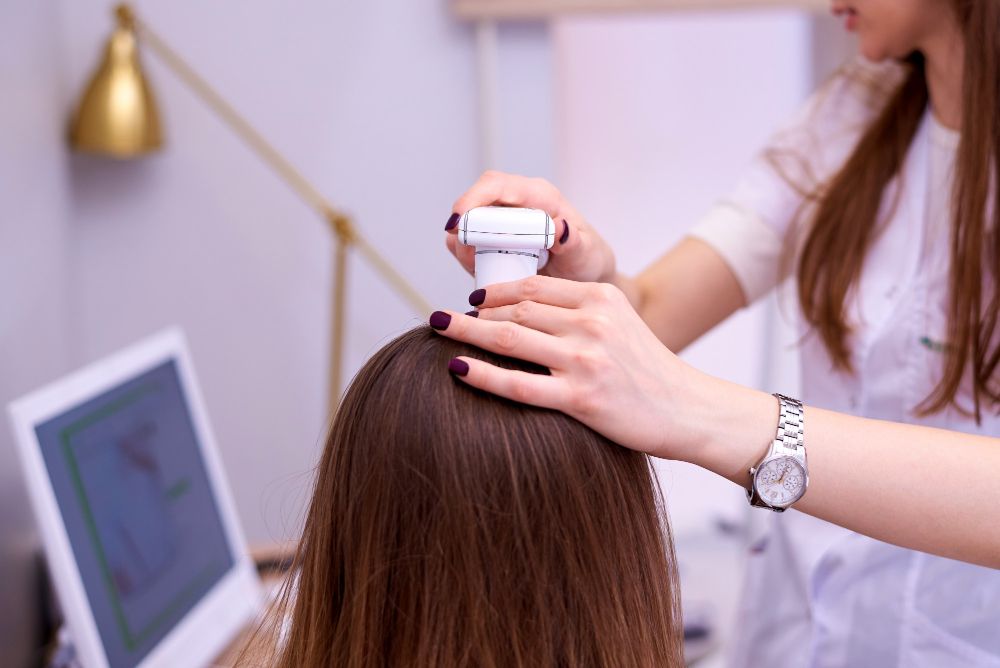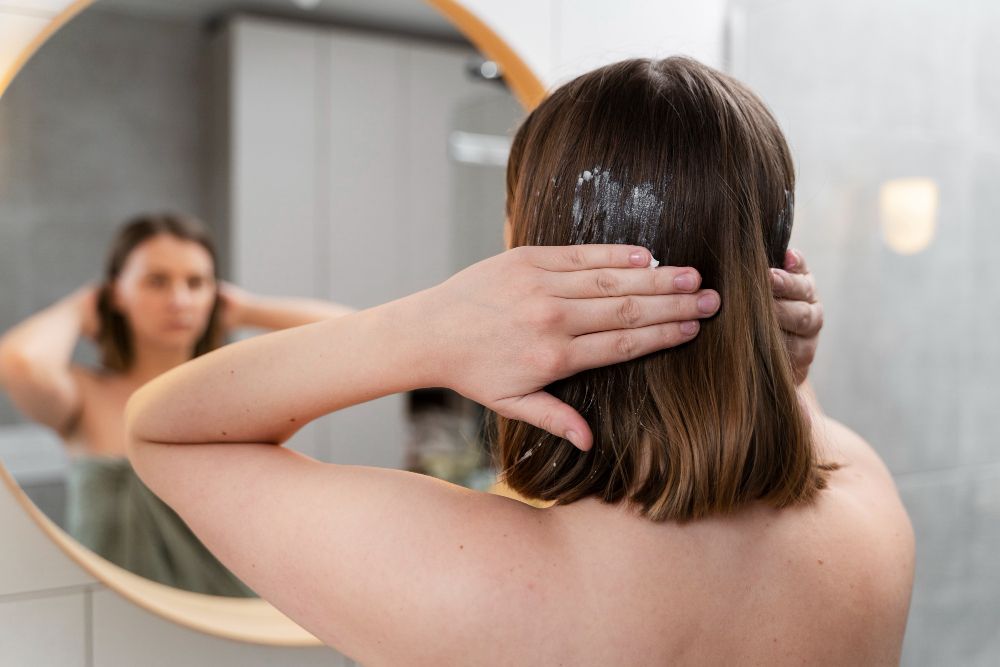- Home
- Trend
- Weight Loss Strategies
- Acne Tips
- Hair Health Information
- Blemish Removal Tips
- Acne Scar Removal Tips
- Muscle Building Techniques
- Intimate Care Tips
- Postpartum Intimate Care
- Eye Bags Wiki
- Tips for Face Slimming
- Secret of Permanent Hair Removal
- Breast Enlargement Tips
- Cure to Snoring
- Marionette Lines
- Skin-Tightening Secrets
Hair loss is a common concern for both men and women. While a few stray hairs on your brush might not be a cause for alarm, noticing a receding hairline, thinning hair, or bald patches can be a source of worry. This blog sheds light on the signs of receding hairlines and hair loss, explores the underlying causes, and offers treatment options to help you reclaim a thicker, fuller head of hair.
General Signs of Hair Thinning and Receding Hairline
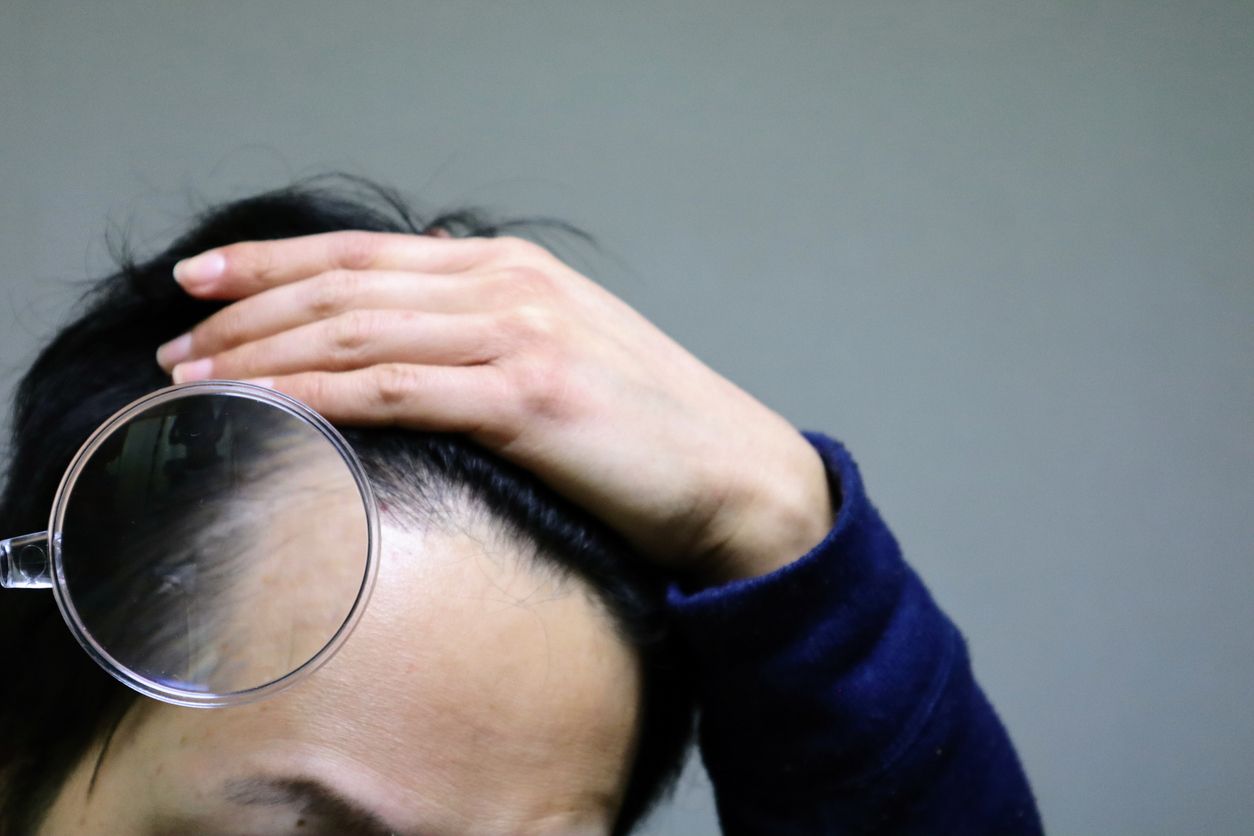
Everyone sheds hair naturally, typically losing between 50-100 strands per day. This shedding is balanced by new hair growth, maintaining a healthy head of hair. However, a receding hairline indicates a potential disruption in this cycle, leading to a noticeable pattern of hair loss.
The recognition of general hair thinning consists of several distinct receding hairline patterns experienced by men and women:
• Temporal Hairline Recession: Frequently, the initial sign manifests as a gradual recession of the hairline at the temples. This recession may commence subtly on one or both sides concurrently, progressing upwards over time.
• Decreased Hair Density: A decline in hair density becomes apparent, particularly noticeable in the frontal scalp (forehead region) and the vertex (crown of the head). Men might observe an increase in hair shedding during showering or brushing, even though the overall hair loss might not be readily apparent at first.
• Widening Parting Line: The natural parting line in the hair, where it separates when falling freely, may become wider and more prominent. This widening is a consequence of the thinning hair on either side of the parting.
Detailed Signs of Receding Hairline According to Gender
The way hair recedes can differ between the sexes. Here's a breakdown:
Men
• The Classic "M" Pattern: The most prominent sign for men is a receding hairline that starts at the temples and gradually progresses upwards in an "M" shape. This pattern is often associated with androgenetic alopecia, commonly known as male pattern baldness.
• Relentless Recession: As the condition progresses, the hairline continues to recede further, potentially reaching the mid-scalp region. This can lead to a horseshoe-shaped pattern of hair loss, with remaining hair concentrated on the sides and back of the head.
• Thinning Takes Hold: Alongside the receding hairline, men may experience thinning hair in the frontal scalp (forehead area) and the crown (top of the head). This thinning can become more noticeable over time, leading to visible patches of scalp.
Women
• Diffuse Thinning: Unlike the localised "M" pattern in men, women with androgenetic alopecia typically experience a general thinning of hair all over the scalp. This thinning is often most pronounced on the crown, where the hair density noticeably decreases.
• Subtle Receding Hairline: While some women might experience a slight recession of the hairline, it usually doesn't follow the defined "M" shape seen in men. The recession might be more uniform across the hairline.
• Widening Parting Line: As the hair thins on either side of the natural parting in the hair, the parting line itself becomes wider and more prominent. This widening serves as an indicator of overall hair loss.
免費體驗
F8 Hair Regrowth Treatment
1 Minute Self-Registration
Date should not be before minimal date
When Does Hairline Recedes Most Likely Will Happen?
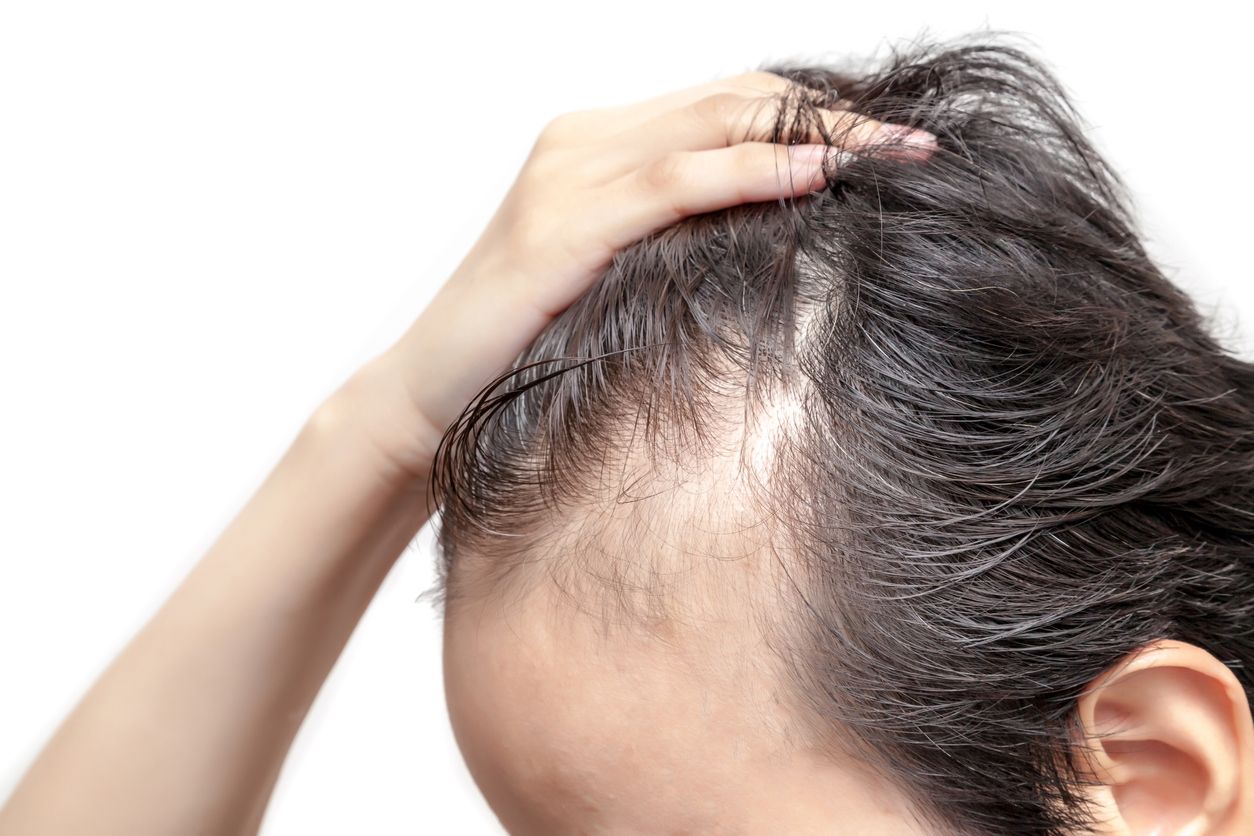
The common age for noticing signs of a receding hairline can vary depending on factors like genetics and ethnicity:
Men
Teens and Early Twenties
Some men may notice signs of a receding hairline as early as their late teens or early twenties, although this is less common. It can be concerning to experience hair loss at a young age, but the progression is often slow during this period.
Mid-Twenties to Early Forties
This timeframe is the most typical for men to begin noticing a receding hairline. By their mid-thirties, approximately 25% of men will have noticeable hair loss, usually characterised by a receding hairline or thinning at the crown of the head.
Women
Generally Later Than Men
Women with androgenetic alopecia, the most common cause of hair loss in both men and women, typically experience hair loss later than men. This condition is hereditary and can manifest differently in women compared to men.
Late Twenties Onwards
While some women may start noticing signs of hair thinning earlier, such as in their twenties, it is more common for hair loss to become noticeable in the late twenties and beyond. Thinning hair is often seen particularly on the crown of the head in women with androgenetic alopecia, although it can vary in severity and pattern.
The rate of progression for receding hairlines can vary significantly between individuals, regardless of gender. Some people might experience rapid hair loss, while others might see a slow and gradual thinning over many years.
Hair loss Occurs Gradually Over Time? That Might Not Be The Case
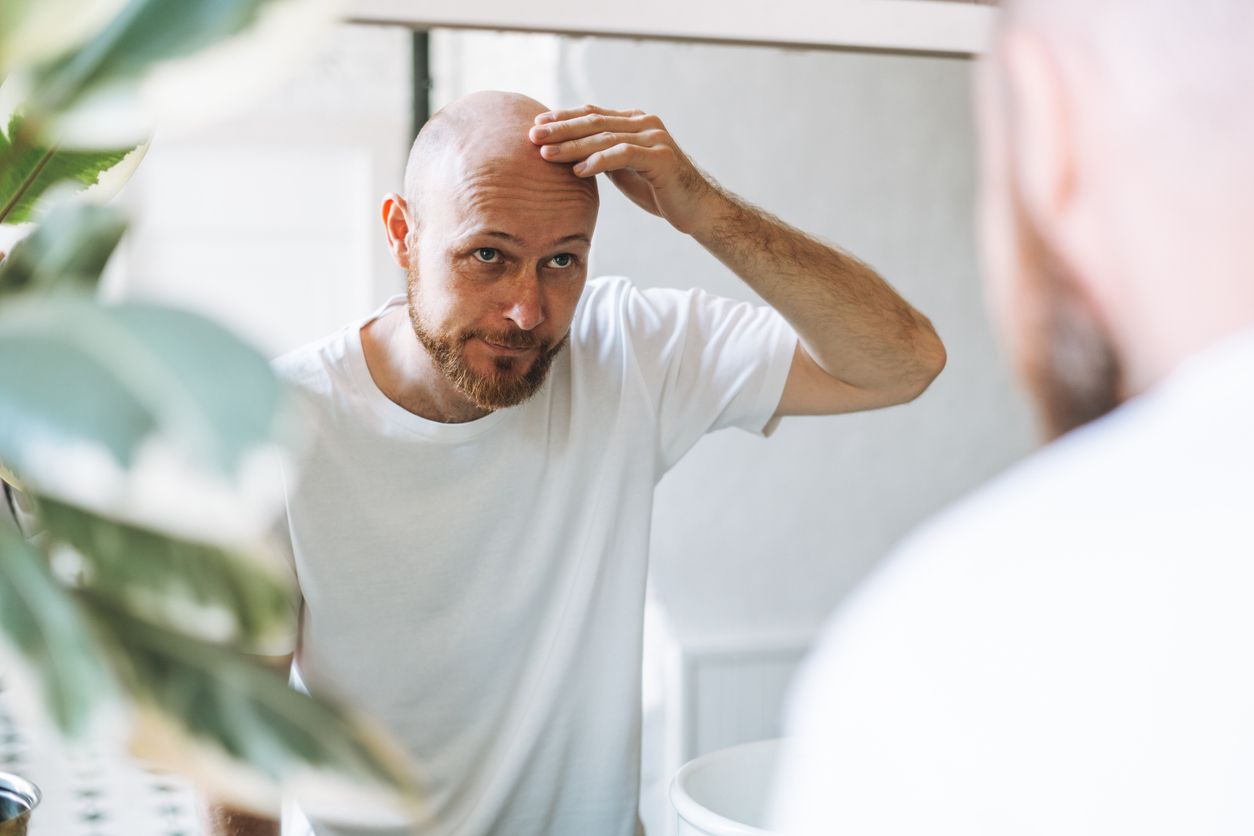
Not all signs of receding hairline refer to male pattern hair loss and female pattern hair loss. While it's a common cause, receding hairlines can also be caused by other factors. Here's a breakdown:
• Telogen effluvium: This is a temporary form of hair loss caused by a disruption in the hair growth cycle. It can be triggered by various factors like stress, illness, significant weight loss, childbirth, certain medications, or nutritional deficiencies. Typically, hair growth resumes once the underlying cause is addressed.
• Alopecia areata: This is an autoimmune disease that causes patchy hair loss on the scalp, beard, or eyebrows. The immune system mistakenly attacks hair follicles, leading to sudden hair loss in round or oval patches. While the exact cause is unknown, genetics and stress might play a role. There is no cure, but treatments can help stimulate hair regrowth.
• Anagen effluvium: This is a rapid hair loss that occurs during the anagen (growth) phase of the hair cycle. It's often a side effect of chemotherapy or radiation therapy used in cancer treatment. Hair loss typically starts within a few weeks of treatment and usually grows back after treatment ends.
• Tinea capitis (ringworm): This is a fungal infection of the scalp that can cause itchy, scaly patches and hair loss. It's most common in children but can affect adults as well. Tinea capitis is highly treatable with antifungal medications.
• Traction alopecia: This type of hair loss is caused by repeated pulling or tension on the hair follicles. It can be caused by hairstyles that pull on the hair, such as tight braids, cornrows, or ponytails. Wearing hair extensions or weaves for extended periods can also contribute to traction alopecia. Early intervention and changing hairstyles can help prevent further hair loss.
• Scarring alopecia: This is a permanent form of hair loss caused by injury, burns, or certain medical conditions that damage or destroy hair follicles. Unfortunately, hair cannot grow back in areas with scarred tissue.
• Cicatricial alopecia: This is a broader term encompassing various types of scarring alopecia, each with its own cause and characteristics. FFA (frontal fibrosing alopecia) is one specific type of cicatricial alopecia.
How to Cover Sudden Hair Loss?

There are several ways to cover a receding hairline, depending on your desired level of effort and the severity of the recession. Here are some options:
Hairstyle Techniques
Strategic Parting: Experimenting with different parting styles can be an effective way to camouflage a receding hairline. Try a side part instead of a centre part. A side part can cleverly utilise your existing hair to cover the thinning areas, creating a more balanced and fuller look.
Textured Styles: Adding volume and texture to your hair can make a significant difference in minimising the appearance of a receding hairline. Use styling products like mousse or wax to create a textured look. Opt for hairstyles with some movement on top, as this can distract the eye from focusing on the hairline.
Shorter Haircuts: Embracing a shorter haircut can be a confident approach to dealing with a receding hairline. Styles such as crew cuts or buzz cuts minimise the contrast between hair and scalp, making the hairline less prominent. These cuts can also project a clean, sharp appearance that exudes confidence.
Hair Loss Concealing Products
Hair Fibres: Hair fibres are tiny, coloured particles made of keratin, the same protein found in natural hair. They cling to your existing hair strands, effectively filling in thinning areas and creating the illusion of a thicker hairline. These fibres are easy to apply and can provide instant results.
Hair Powders: Hair powders function similarly to hair fibres. These coloured powders can be applied directly to the scalp to camouflage thinning areas and create a denser-looking hairline. They are a quick and temporary solution to cover up sparse spots.
Scalp Sprays: Tinted scalp sprays are another option for concealing hair loss. These sprays can darken the scalp, reducing the contrast between the scalp and hair, which makes thinning areas less noticeable. They are available in various shades to match your hair colour.
Hair Replacement Solutions
Hair Toppers: Hair toppers are clip-in or weft pieces designed to add volume and coverage to thinning areas, especially at the crown of the head. Some hair toppers are specifically designed to cover a receding hairline, blending seamlessly with your natural hair for a fuller appearance.
Wigs and Hairpieces: Wigs and hairpieces provide a more comprehensive solution for covering significant hair loss. They come in various styles, lengths, and materials to suit individual preferences and budgets. While wigs and hairpieces require a higher level of commitment and maintenance, they can completely transform your look and provide full coverage for any hair loss pattern.
免費體驗
F8 Hair Regrowth Treatment
1 Minute Self-Registration
Date should not be before minimal date
Treating Hair Loss with Perfect Medical

A receding hairline is a common concern for many individuals, often marked by a gradual loss of hair at the temples, leading to a more pronounced forehead and an "M" shape pattern. This change can significantly impact one's appearance and self-confidence. Traditional treatments can be invasive and uncomfortable, but there's an innovative solution available that combines advanced technology with effective hair regrowth strategies: the F8 Hair Regrowth Treatment.
How F8 Hair Regrowth Treatment Can Help
• Stimulates Hair Follicles with Low-Energy Laser Beams
The F8 Hair Regrowth Treatment employs low-energy laser beams to stimulate blood circulation in the scalp. This increased blood flow delivers essential nutrients and oxygen to the hair follicles, promoting healthier and stronger hair growth. By revitalising the hair follicles, this treatment can help counteract the effects of a receding hairline.
• Strengthens Hair with Nutritive Serum
Alongside laser therapy, the F8 treatment includes a specialised serum designed to nourish the scalp and hair. This serum contains ingredients that are known to support hair health, such as Panax ginseng and Arnica montana. These ingredients work synergistically to strengthen the hair shaft, reduce breakage, and enhance overall hair quality, which can be particularly beneficial for thinning areas along the hairline.
• Prevents Further Hair Loss
One of the critical aspects of managing a receding hairline is preventing further hair loss. The F8 Hair Regrowth Treatment helps to create a healthier scalp environment, which can inhibit the progression of hair loss. By maintaining optimal scalp health, the treatment supports the preservation of existing hair and encourages new growth in thinning areas.
• Non-Invasive and Comfortable
Unlike surgical hair restoration procedures, the F8 Hair Regrowth Treatment is non-invasive and comfortable. This makes it an excellent option for individuals looking to address their receding hairline without undergoing surgery or experiencing significant downtime. The treatment sessions are designed to be relaxing, ensuring a positive experience while achieving effective results.
• Visible Results and Enhanced Confidence
With consistent use, the F8 Hair Regrowth Treatment can lead to visible improvements in hair density and hairline appearance. Many individuals report seeing thicker, fuller hair along their hairline, which can greatly enhance their overall look and boost self-confidence. By taking proactive steps to address a receding hairline with this advanced treatment, you can enjoy a rejuvenated and youthful hairline.
Experience the Benefits of F8 Hair Regrowth Treatment with Us
At Perfect Medical, we are committed to offering cutting-edge solutions for hair loss. Our F8 Hair Regrowth Treatment is tailored to meet the unique needs of each individual, providing a personalised approach to hair restoration. With our expertise and innovative treatments, you can take control of your hair health and achieve the revitalised hairline you desire.
Take Control of Your Hair Loss Journey

Don't wait to address your signs of hair loss. Early diagnosis and treatment can significantly improve the outcome. Perfect Medical is here to guide you every step of the way, offering comprehensive hair loss solutions to help you reclaim your best head of hair!
免費體驗
F8 Hair Regrowth Treatment
1 Minute Self-Registration
Date should not be before minimal date
FAQ

1. What are the common causes of hereditary hair loss, and can it be reversed?
Hereditary hair loss, also known as androgenetic alopecia, is primarily caused by genetic factors that can lead to the shrinking of hair follicles. Unfortunately, hereditary hair loss is often permanent, but treatments like hair transplants and medical treatments can help manage and potentially reverse hair loss to some extent.
2. How do hair transplants work in treating hair loss?
Hair transplants involve transferring hair follicles from areas of dense hair growth to thinning or balding areas. This procedure can effectively treat hair loss caused by various factors, including hereditary hair loss and receding hairlines. The transplanted hair continues to grow naturally, offering a long-term solution.
3. Can tight hairstyles lead to permanent hair loss?
Yes, tight hairstyles can lead to a condition called traction alopecia, which occurs when constant pulling on the hair damages and shrinks hair follicles. This condition is often caused by hairstyles that put excessive tension on the hair, such as tight ponytails, braids, buns, and extensions. Over time, the continuous strain can weaken the hair follicles, making them less capable of producing healthy hair and eventually leading to permanent hair loss.
4. What are the treatment options for female pattern baldness?
Female pattern baldness is a type of hereditary hair loss in women characterised by thinning hair across the scalp. Treatment options include topical medications like minoxidil, oral medications, and hair transplants. These treatments can help manage and reduce hair falling and improve hair density.
5. How can medical treatments promote hair growth?
Medical treatments such as minoxidil and finasteride have hair growth promoting effects and can help treat hair loss. Minoxidil works by stimulating hair follicles, while finasteride helps prevent the hormone that causes hair follicle shrinkage. Both treatments can slow down hair loss and promote regrowth.






